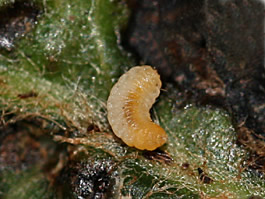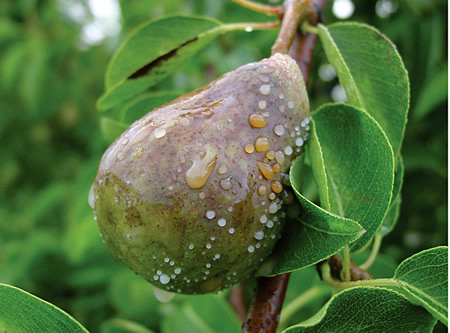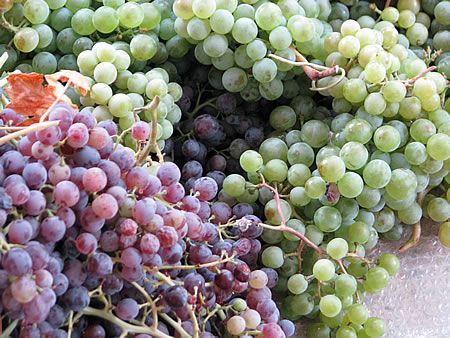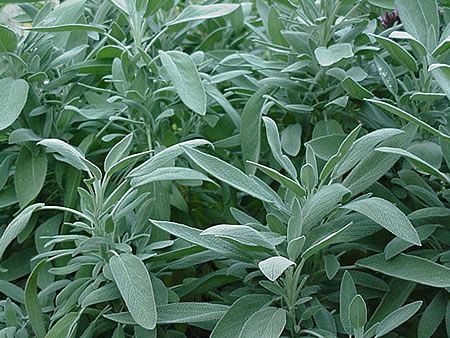Want to know about growing pear trees in the garden or in pots on the balcony? A useful article about cultivation care, pests, diseases, deficiencies.
The production of pears in Greece in the past exceeded 120.000 tons.
Figure 2. Pear blossoms.
Nowadays there is a shortage of pears in Greece, and our country imports mainly from Spain, Italy, South Africa and also from American countries. European countries that produce pears are Spain, Italy, France and Portugal. In Greece pears are cultivated in Macedonia, Thessaly, Peloponnese and West Sterea.
Greek name: Αχλάδι, Αχλάδια (plural)
Scientific name: Pyrus communis, genus Rosaceae.
Pear varieties
The varieties are divided into autumn and summer varieties.
Summer pear varieties
Coscia: a tree of medium vigor, with medium-sized, yellow fruits of medium flavor and medium taste. It can’t be kept in the refrigerator and ripens in the second half of July. This variety has been copied from the Tsakoniki and Kontoula varieties.
Kontoula: produces small-sized fruit with a very sweet taste. It ripens in July and can’t be kept in the refrigerator. The Coscia and Tsakoniki varieties are very good pollinators. The disadvantage of this variety is that the fruit falls off when ripe.
Santa Maria: produces large-sized fruit, poor in sugars, but is the most presentable and commercial pear. It can’t be kept in the fridge, ripens in August and a good pollinator is the Passa Crassana variety.
Tsaconiki or Krystalli: a very widespread variety in Greece, its fruit is tasty and juicy and can be kept in the fridge for a long time. It is harvested in the first ten days of August when it is to be preserved and in the second ten days if it is to be eaten. Suitable pollinators are the Coscia and Kontula varieties.
Butyrati and Dukessa: grown in Macedonia and Thessaly.
Dr. J. Guyot: it is a stunted tree but it comes into fruiting quickly. It is harvested in the second 15 days of July and good pollinators are Kaiser Alexander and Conference.
Autumn pear varieties
Passa Crassana: a variety that produces large, tasty and juicy fruit. It is harvested in October and is kept for a long time in the refrigerator. It should not be planted in areas with strong winds because it causes the fruit to fall.
Kaiser Alexander or Bosc: the fruit is bell-shaped, tasty but susceptible to rotting.
Conference: a productive variety that can be kept in the refrigerator for a long period and harvested at the end of August/beginning of September. Good pollinators are William’s, Passa Crassana and Comice.
Abate Fetel: produces very tasty fruit, ripens in September and keeps well in the fridge. It needs a pollinator and Passa Crassana is the main variety used.
Packham’s Triumph: the fruit is medium to large in size, light green in colour. Good pollinators are Conference, Passa Crassana and Comice. It is harvested in September and is mainly distributed in the Southern Hemisphere.
In recent years, efforts have been made to create red pear varieties with good characteristics and long-term preservation potential.
Climate and soil
The pear tree requires a hot and dry summer. High humidity causes problems and it is sensitive to spring frosts. It thrives in deep, well-drained soils, but not in dry and light soils. It is a less drought tolerant crop than the apple tree, it can withstand low temperatures but before flowering, after flowering, it can withstand a maximum of -2 degrees Celsius. A suitable pH for its growth is considered to be 5.8-8.0. Soils rich in calcium show signs of ageing and pears are particularly sensitive to salts in irrigation water. The main areas in which pear trees are grown are: altitudes of 200-300 m with an average temperature of 8 °C and altitudes of up to 350 meters with an average temperature of over 7 °C.
Pear tree rootstocks
In order to grow, the pear tree is grafted onto rootstocks which are:
1) wild pear tree: it thrives on a variety of soils, produces vigorous trees that are slow to bear fruit,
2) quince: EMA and BA 29 quince clones are used. The quince tree should not be used when irrigation is not possible, when the temperature reaches -23 °C and when the pH is higher than 7.5 and
3) there are hybrids resistant to pear diseases and their production depends on the conditions of the area.
Planting pear trees
The pear tree is planted in autumn and can be used as a single tree where shade is needed in the garden or in groups in different parts of the garden.
From the moment we buy the saplings we need to dig a pit in which much of the root system fits. A suitable soil depth for its growth is 50 cm. Care is needed, however, so that the grafting point is not submerged in the soil but is 5 cm above the ground. Then “press” the soil lightly by hand, followed by watering, 25-30 litres/tree.
For someone who has a garden, pear trees can be planted either in a square or diamond shape or in rows. The square or lozenge system is applied when the wild pear tree is the rootstock. The system in rows is applied when our subject is the quince tree. The planting distances in this system are 2 metres on the line and the rows are spaced 3.5-4 meters apart.
Pruning of pear trees
Pruning morphology
The pruning which has been established on the pear tree to give the tree shape is palmette pruning. The branches form a 45 degree angle with the central axis and in order to get the desired position they must be tied with plastic cords. It is a difficult shape and requires patience and perseverance. When our tree reaches a height of 2.5-3 metres, the branches that will give us fruit are pruned very little and of course we always remove the dead branches and thin out where they are too dense.
Pruning fruit bearing
Summer pruning is carried out in order to improve the growth of the fruit, improving its quality. It is carried out in the months of May and July, on trees that are vigorously growing, and the 20-25 cm long shoots are removed either by hand or with scissors.
Winter pruning is carried out in autumn, with the leaves falling in the autumn. The annual shoots are not touched, while the others are cut off at 2/3 of their length.
Strict pruning results in no fruit bearing.
Irrigation of pear trees
The amount of water the pear tree needs depends on the area, the rootstock, the soil, the age of the tree, etc. It has higher requirements in the period May-October. The same applies to the apple tree.
Growing pear trees in pots
It is possible to grow pear trees in a pot, provided, of course, that they are placed in a sunny position and in well-draining soil. It should be planted in a large pot, 50 cm x 50 cm x 50 cm, with a volume of 125 litres, or planted in a large diameter barrel at least 0.5 m high. There is a mini variety where the height of the tree will reach up to 1.5 metres. Prune the plant at the end of winter, removing the dry and weak branches. It will flower in April-May and bear fruit in September. If we have a garden and want to plant dwarf varieties, the appropriate planting distance is 40 cm.
Fertilizing pear trees
The pear tree has a greater need for nitrogen compared to the apple tree, while its requirements for phosphorus and potassium are limited. The Passa Crassana variety is more nitrogen demanding when grafted on quince.
A general fertilization for the pear tree (for a 10 m2 garden), is to add: 0.15 kg N – 0.05 kg P – 0.1 kg K at the end of winter and, in addition in spring, 0.15 kg of ammonium nitrate or 0.33 kg of calcium nitrate, if the soil pH is low.
Where manure is available, we apply 20 kg of manure, which is sufficient for 2 years.
Nutrient deficiencies of pear trees
Common nutrient deficiencies of pear trees are:
Iron (Fe) and magnesium (Mg) deficiency
Iron (Fe) and magnesium (Mg) deficiency: occur together, especially when the rootstock is quince. These nutrient deficiencies are treated by applying iron to the soil and spraying the foliage with magnesium.
Figure 3. Magnesium deficiency in pear leaves.
Figure 4. Iron deficiency (severe deficiency) in pear leaves.
Zinc (Zn) deficiency
Zinc (Zn) deficiency: zinc deficiency is corrected by spraying zinc-containing substances.
Figure 5. Zinc deficiency in pear leaves.
Boron deficiency
Boron deficiency: the most important deficiency for pear. It is manifested by symptoms on both fruit and flowers. In the fruit, there is cracking of the bark with the formation of a cork on its surface, and in the flowers there is “burning”. It is treated either by applying borax to the soil e.g. in a 10 m2 garden 0.05 kg or 5 grams is needed or by spraying with boric acid (0.25%).
Figure 6. Boron deficiency in pear fruit.
Pests of pear trees
Pear psylla
Pear psylla: the adult of the insect looks like a very small cicada. Larvae and adults suck the juices of the leaves, shoots and fruits. They leave sticky exudates (honeydew exudates) that favour the appearance of fungi and often leaf necrosis appears on the leaf where the honeydew drop is located.
There are necrotic spots on the leaves, sticky fruits, delayed germination, chlorotic leaves or even leaf drop.
A characteristic feature of pear psylla infestation is that they lay their eggs in rows on the lower surface of the leaves, along the central nerve. Their population decreases in summer and increases again in autumn. This insect only attacks pear trees.
Figure 7. Adult of the pear psylla.
Figure 8. Eggs of pear psylla on the lower leaf surface.
Figure 9. Sooty moths on a lemon leaf on honeydew larval excretions.
Control: it is a difficult insect to control because it quickly develops resistance to many insecticides.
The following control programme has been applied with satisfactory results: 1) spraying in January-February, 2) from pear blossom to mid-June, 3) from mid-June to harvest and 4) in autumn before leaf fall, using synthetic pyrethroids.
Suitable formulations for pear flea are Warrior 2.5 WG and Sentinel 2.5 WG applied in spring and autumn.
Pear fruit sawfly (Hoplocampa brevis)
Pear fruit sawfly: attacks only the pear tree and has the smell of a bug. The adults appear in early spring (mid-March-early April), the time when the pear tree is in bloom. As a rule, they lay an egg on each flower and then open a hole in the surface layers of the fruit. The larva heads for the inside of the fruit which it eats and then emerges and falls to the ground.
Affected fruits show deformities and dark spots and eventually fall off. The infestation can cause flower drop.
Figure 10. Adult of pear fruit sawfly.
Figure 11. The dark spot is the pear fruit sawfly’s larval exit hole.
Control: Usually one insecticide spray is sufficient, just after bloom. For someone who has 3-4 pear trees, colored sticky traps are used.
Pear midge (Contarinia pyrivora)
Pear midge: its eggs are usually laid in clusters on the upper surface of pear leaves. Its presence causes the lamina to thicken, become deformed and not grow properly in width. The leaves become rounded and sometimes even corrugated, where the insect larvae are present. The leaves do not change color at first, but in the course of time they become reddish around the perimeter, cracked, dead, blackened and finally fall off.
Figure 12. Pear midge eggs on a leaf.
Figure 13. Yellowish pear midge larvae.
Figure 14. Clustered pear leaves infested with pear midge larvae.
Control: Early cutting and destruction of infested leaves is practical when we have few trees. When we have a heavy infestation, one to two sprays of an insecticide such as heptenophos are recommended.
Caution: wood-eating insects, Codling moth (Cydia pomonella) and Spotted tentiform leafminer are common to pear and apple trees and are treated in exactly the same way, so see the article on apple trees.
Diseases of pear trees
Black spot of pear (caused by Venturia pyrina)
Black spot of pear: a very widespread and serious disease. It affects leaves, flowers, fruits and, in severe form, also the branches. On the underside of the leaves, velvety spots appear on the underside, on the shoots there are spots which develop into pustules. Some varieties, such as Tsakoniki, are sensitive, should not be planted in wet places and need great care in spring.
Figure 15. Black spot in pear leaves.
Figure 16. Black spot symptoms on young pear fruits.
Figure 17. Symptoms of black spot on apple shoots.
Control: The black spot disease is managed with the same measures and fungicides recommended for apple scab.
Fire blight (caused by Erwinia amylovora)
Fire blight: caused by the bacterium Erwinia amylovora. The bacterium enters the tree from the flowers, leaves and tender shoots. Temperatures between 18-30 degrees Celsius and rainy weather are suitable conditions for the spread of the disease. The varieties showing high susceptibility to this disease are Passa Crassana, Kontula, Abate Fetel, Packham’s Triumph and to a lesser extent Conference and Kaiser.
Figure 18. Fruit affected by the φire blight bacterium.
Figure 19. Pear tree affected by the φire blight bacterium.
Control: preventive: 1) pruning: remove all affected shoots, cut them 15-30 cm from the infestation site. It is important not to leave infected branches on the tree for a long time, 2) watering: use drip irrigation or low pressure sprinklers but never artificial rain, 3) fertilization: apply limited amounts of nitrogen, and 4) insect control: aphids, fleas and other insects carry the bacterium, so control them. For chemical control: in the fall, during the leaf fall period, we spray our tree with a borage slurry or a copper formulation; in the spring, we use a copper formulation or borage slurry and 1% oil. Also, during the flowering period, we apply antibiotic sprays and repeat them every 3-5 days to protect the new flowers.
Cultivation calendar of pear trees
November-December-January-early February: prune the trees in order to remove any infested shoots, check for weeds and spray with winter insecticide if psyllas have appeared.
February-March-April: cut weeds, apply nitrogen and if needed phosphorus and potassium, check for black spot of pear and insects, do the first thinning of the fruit.
May-June-July: irrigate, remove extra fruits by hand, check for diseases and pests, apply N, P and K through irrigation.
August-September-October: check for diseases and pests, check for weeds, irrigate if necessary and remove affected sections.
Agronomist Sophia Papazoglou
Agronomist MSc “Environmental Management”
Photo by Delia Giandeini on Unsplash
Tags: CULTIVATE • CULTIVATION • DEFICIENCIES • DISEASES • ENEMIES • GARDEN • PEAR TREE • POT























